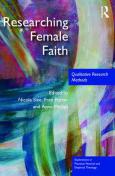Reviews of
How Survivors of Abuse Relate to God: The Authentic Spirituality of the Annihilated Soul
Review by Julia A. Feder in Theology & Sexuality, 19/2, 2013
Review in the Church Times 15th March 2013
Review by Frank Regan in Renew
One of the first books published on the topic of clerical sex abuse bore the title: Soul Destroyers. I remembered that title as I opened the pages of this book for it is impossible to believe that innocent children could survive such a traumatic experience without grave spiritual harm. As christians they are the Body of Christ. To violate their bodies is a sacrilege, an insult to the loving God who brought them into life. That a priest or religious should commit such a sacrilege is beyond imagining and raises searing questions about the formation our priests receive regarding their sexuality and the psychological health of the clerical establishment.
Susan Shooter is an Anglican priest in the Diocese of Rochester with an M A in Theological Studies. She wants to trace the elaboration of “The Authentic Spirituality of the Annihilated
Soul”. She writes academically, and strives to be scientific, analytical and clinical. Yet she has written a very moving book. She relates her experience of accompanying nine women survivors of
sexual abuse. Though her format is academic, she lets the victims speak for themselves. The reader cannot but admire the courage and faith of those women and be thankful that we are beginning to get
some kind of grasp of a sad human situation and of the persons who must live that situation. Not only have the women survived the abuse they suffered but some have survived abusive therapies which
only enmired them more in their pain. (Of course, we cannot forget the abusers. We do not know, any more than they do, why they did what they did. Along with the women who still struggle with
forgiveness, we can only reflect on our own weakness and vulnerability, refrain from judgment and lament our common wounded humanity.)
In the course of the book Susan Shooter will have recourse to Scripture, Tradition and Reason. She mentions two difficulties which can make tentative results and conclusions drawn from her study.
One is the scarcity of material on abuse and the experience of spirituality lived and articulated by the victim. The other difficulty is the paucity of investigation done on women’s
experience of faith. As the study progresses through a clinical practice of listening, the women, whose identity is protected, emerge as discovering in the concrete and mundane the ‘locus’ of
spiritual awakening, the place where empathy and connectedness meet. It is also the place where alienation due to abuse and incomprehension might generate forces for transformation.
The late much loved Bishop Benny Tudtud of Philippines lived by the principle that in entering into someone’s story we are treading on sacred ground and so must remove our shoes. The
utmost respect and reverence are required. Shooter is appropriately delicate, even reticent, to hand over to us the stories and souls of these women as we partake of their searing narratives. After
all, our story is what makes us unique and identifies us. The Gospel is the story of a human life taken, blessed, broken and given. The women have graciously shared with us the— could I say—Eucharist
of their stories, stories of bodies taken and broken, of souls destroyed and of persons transformed and transfigured in the Resurrection. They had to start from a place where they experienced
deformation and disfiguration.
Not all of the stories are of clerical sexual abuse. Some started in the home with neglect, violence and incest. The school too was a place where violence was a frequent event. For a few, rape was the obstacle to be overcome.
This is a book which will make us look again at what we understand as Spirituality. Here it is far from the moments of relaxed prayer and reflection which you and I might enjoy and benefit from.
Spirituality is derived from the experience of ‘walking the walk’ and the women have walked through fire, have shed numerous tears and have wrestled with God. For them their Spirituality has become
an energy and inspiration which at the end of a long and painful process has brought them out of depths of deep despair to new spaces where they have
become christian ministers in many different ways. Ours is a highly sexualised culture. Pornography is readily available and new ways of easy communication have permitted young people especially to
talk about their awakening sexuality in ways that are not always healthy. “Sexting” is a recent form of adolescent communication. By the age of 18 around 25 per cent of girls and 10 per cent of boys
have suffered sexual abuse. Silence has been the usual form of addressing the problem until only recently. Thanks to second wave feminism conscientious women have exposed the extent to which sexual
abuse has reached into every corner of society, especially the sanctuary of the home. Not only children, but also spouses. Only since 1991 can the crime of spousal rape be tried and judged. The
Churches have been of almost zero assistance. Their silence and cover-up have been obdurate; resistance to take responsibility has been stubborn; and their reluctance to provide recompense has
dragged it through ugly court cases. In some instances their pastoral practice has been abusive and evasive. They say “we must forgive and forget”. The Rev Shooter points out that ‘forgive and
forget’ is not biblical. It is from King Lear. It is not obligatory to forgive the unforgiveable. That is a graced gift of God. The Church must first beg forgiveness and show repentance for
reconciliation to begin its long walk. False notions of forgiveness have led to grave injustices and immense harm to the victims’ souls. The author recounts how in the course of therapy, storytelling
and pain-sharing the journeyers
enter a stage the author calls “transformation”. This involved a transformation of self, spiritual awakening and a slow metamorphosis of pain and evil into good. It was an uphill slog
punctuated by thoughts of suicide and self-harming.
One of the women reported feelings of intense anger with God. A second wanted God out of her life. Accompaniment by therapist and friends was essential. With time and much support
the women experienced a renewal of faith, a discovery that God loved them no matter what and from the experience of God’s love came a conviction of self-worth. God became an essential component of
their Calvary. One woman could say to God that if she got through it God could have what was left. Another said that there was no going back to the old ways of thinking and feeling. Still another
gave testimony of a God who nurtured her from being a dependent child to being an adult able to face a past impossible to change and begin building a future in which something new could happen. It is
interesting that none of them got stuck into thinking that their suffering was part of God’s
plan. Rather, something evil had occurred. With God something good could come of it. Nor was it God’s will that Jesus died on the cross. But from that traumatic deed healing flowed for
everyone.
Shooter gives us an excellent chapter on how her clients learned to read Scripture in a different way. One particularly challenging passage was from Philippians 2 which treats of the Kenosis
of
Jesus. One could misread it to justify bullying and negative forms of self-abasement as being part of the vocation of self-emptying, of erasing of the self. It was a long journey to a reading which
permitted the women to recognise in Jesus an attitude of self-emptying in relation to God and self-humbling in relation to humanity. He would not grasp at having power but rather
empowered others. The cross becomes a tool for liberation, not an instrument of torture. God did not want his child to die. God took that death and from it brought forth new transformed
life and new transfigured humanity.
The healing process has rendered some surprises in that some of the women have felt the call to pastoral ministry. They are still listening and in discernment. Some have experienced rejection of
their feeling. Shooter raises some valuable questions regarding the value of the experience of the victims for others in the Church who are going through a similar ‘valley of gloom’. Victim Sarah
says that the Church is for healing a broken world. The author also raises questions about the pastors. Do they know anything of the world of the victims, their feelings,
their desolation, their isolation etc? Have they faced their own wastelands? And if they have not walked their own wasteland, can they walk barefooted the wasteland of others?
This is a book to be read and reflected upon. The stories it relates are only a few. There are thousands of victims whose narratives have fallen on deaf ears. Susan Shooter has performed a great service to the Church, painful as that may be. Every chapter will reward the reader with new information and insight regarding a little known community of sufferers in our midst.
The value of the book is enhanced by a bibliography and Indexes of Authors, Subject and Scripture.
Frank Regan
August 2013



